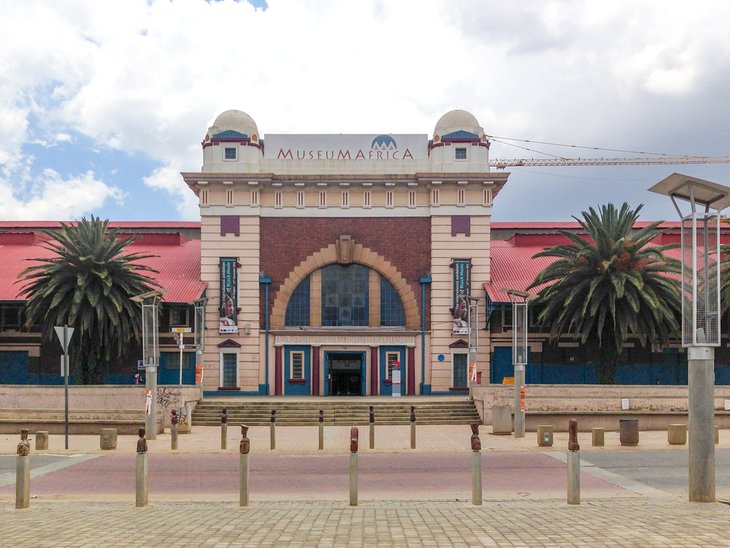10 Easy Facts About Johannesburg North Attractions Shown
10 Easy Facts About Johannesburg North Attractions Shown
Blog Article
The smart Trick of Johannesburg North Attractions That Nobody is Discussing
Table of ContentsThe Buzz on Johannesburg North AttractionsEverything about Johannesburg North AttractionsThe 4-Minute Rule for Johannesburg North AttractionsThe Definitive Guide for Johannesburg North AttractionsThe 30-Second Trick For Johannesburg North AttractionsFacts About Johannesburg North Attractions UncoveredHow Johannesburg North Attractions can Save You Time, Stress, and Money.
You should keep security in mind and travelers should continue to be sharp at all times when in strange surroundings. Talk to the citizens when you are in community to discover the area you are remaining in. Johannesburg North attractions. When on the road (this doesn't put on buying malls and other safe and secure atmospheres) best general suggestions is to attempt your ideal to look like a neighborhood and to stay clear of displaying any kind of kind of riches
About Johannesburg North Attractions
Teacher Revil Mason O. J. (Thomson, 1946) checked out the Witwatersrand's pre-colonial background. His archaeological work took off the 'em pty land' myth, according to which the region was empty of human habitation before the arrival of European settlers. In his magazines Prehistory of the Transvaal: A Document of Human Task (1962) and Beginnings of Black People of Johannesburg and the Southern Western Central Transvaal Advertisement 3501880 (1986 ), Teacher Mason showed the degree of social and financial growth in the location before Europeans set foot below.

Some Of Johannesburg North Attractions
In 1878, David Wardrop located gold in quartz capillaries at Zwartkop, north of Krugersdorp. In 1881, Stephanus Minnaar came throughout gold on the farm Kromdraai, near the Cradle of Mankind.
In March 1886, a protrusion (quickly to be called the Key Reef) was discovered, rather fortunately, on Gerhardus Oosthuizen's ranch Langlaagte. Some claim that the Lancastrian coal miner George Pedestrian uncovered this coral reef. Another travelling English prospector, George Harrison (who had actually formerly worked in Australian mines) acquired a prospecting licence in respect of Langlaagte in May 1886.
He made a decision to proceed in a mission for greener fields, and disposed of his Langlaagte claim for the handsome amount of 10. Alas: under lay the richest goldfield ever before found. The discovery of this abundant auriferous coral reef provoked a gold rush that indicated completion of agrarian serenity in the southern Transvaal.
It would, within 6 years, become the biggest town in southern Africa. Within a decade, it would certainly make the Z. A. R. up until then an anarchical and insolvent little state the wealthiest country in Africa. By the turn of the century, the Z. A. R. was to go beyond Russia, Australia and the USA of America to come to be the globe's leading gold producer, creating greater than a quarter of the world's gold.
7 Easy Facts About Johannesburg North Attractions Explained
It was called Ferreira's Camp, named after Colonel Ignatius Ferreira. He was a Boer traveler upon whom try this web-site the British authorities had bestowed the standing of Friend of the Most Distinguished Order of St Michael and St George (qualifying him to the post-nominal letters C. M. G.) in gratefulness for his duty in the battle that had deposed the Pedi king Sekhukhune in 1879.
2 other camps were established: Meyer's Camp on the ranch Doornfontein, and Paarl Camp. The latter was nicknamed Afrikander Camp; many individuals from the Cape Swarm worked out there.

The Ultimate Guide To Johannesburg North Attractions
This name got navigate to these guys money by word of mouth, such that the State Secretary affirmed the name to the Mining Commissioner on 9 October 1886. Stands in the town were auctioned on 8 December 1886. While some stands were cost 10, others were knocked down for as low as sixpence.
Two years later, these erven were to change hands for as long as 750 each. The tented camps diminished as a dorp of corrugated iron structures created and expanded north of the mines located along the Key Reef Road. Locations such as Jeppe's Town (where working-class immigrants erected their dwellings) and Doornfontein (where the affluent new 'Randlords' started to build their extravagant houses) were quickly added to the ever-expanding map of the community.
Get This Report on Johannesburg North Attractions
Aside from the road names, there were no indications of Johannesburg being located in a Dutch-speaking country. Several years later, C. W. Kearns O. J. (one of the first young boys enrolled at St John's University in 1898) would recall: 'An odd reality regarding Johannesburg was that, although it remained in the [Boer Republic], nearly every person talked English and even the Federal government servants addressed one in English, unless they were initial attended to in the Taal (or Reduced Dutch)'.
Thus, Britain had a rate of interest in ensuring ideal problems for gold production on the Witwatersrand, and that the gold was exported to London instead of Berlin a critical provided even more clamant by the Z. A. R - Johannesburg North attractions.'s raising toenadering with Germany. Mine owners got on a collision training course with President Kruger, whose policy of monopolistic giving ins (often provided to his cronies) avoided mining companies from acquiring products of materials Extra resources (specifically dynamite) and work on their own, cheaper terms
The Johannesburg North Attractions PDFs
In 1890, the Volksraad had limited the franchise business to white men who had actually resided in the Z. A. R. for fourteen years or longer, hence disqualifying the majority of the immigrants (who occurred to be the major contributors to the fiscus). Anxiety for the ballot was a plain pretext for promoting a various schedule; many uitlanders concerned themselves as short-term visitors and had no purpose of continuing to be in the Z.
Report this page